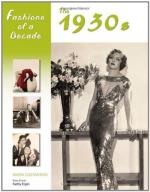|
This section contains 355 words (approx. 2 pages at 300 words per page) |

|
World War II and the Cold War validated many New Deal economic theories, at least from the perspective of the majority of the nation's business leaders and politicians. Deficit spending received a theoretical boost with the publication of British economist John Maynard Keynes's General Theory of Employment, Interest, and Money (1936). Keynes's argument was that deficit spending could be used to temper the effects of the business cycle. Countercyclical spending could indeed prevent catastrophic depression — but the spending had to be great enough to make a difference. The New Deal's tens of billions, it turned out, were too little; World War II's $240 billion was what was required to spark the private sector economic recovery. High wages due to powerful labor unions and a progressive income tax sustained that recovery. Businessmen not only prospered within the regulative supervision of the government, but they extended its...
|
This section contains 355 words (approx. 2 pages at 300 words per page) |

|




